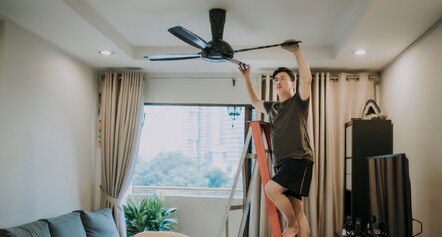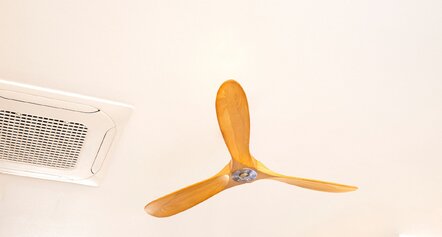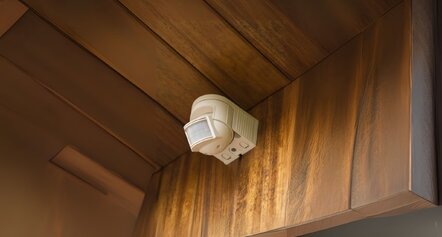Ceiling fans aren’t just about staying cool in summer. When used correctly, they can help regulate temperature all year round, reduce energy costs, and create a more comfortable living space. But if your fan is spinning in the wrong direction? You could be doing more harm than good.
Here’s how to ensure your ceiling fan is set to the right setting—and why it matters.
Understanding Fan Direction Settings
Ceiling fans rotate in two main directions: clockwise and counterclockwise. The direction affects how air circulates in the room.
- Counterclockwise (summer setting): The fan blades push cool air down, creating a breeze that helps you stay cool without needing to blast the aircon. This airflow creates a wind chill effect, making the room feel cooler than it actually is.
- Clockwise (winter setting): The fan rotates slowly, producing a gentle updraft. This pulls cool air up and forces warm air (which naturally rises) down along the walls, creating a comfortable and warm environment.
Understanding this simple concept can help you make the most of your fan year-round.
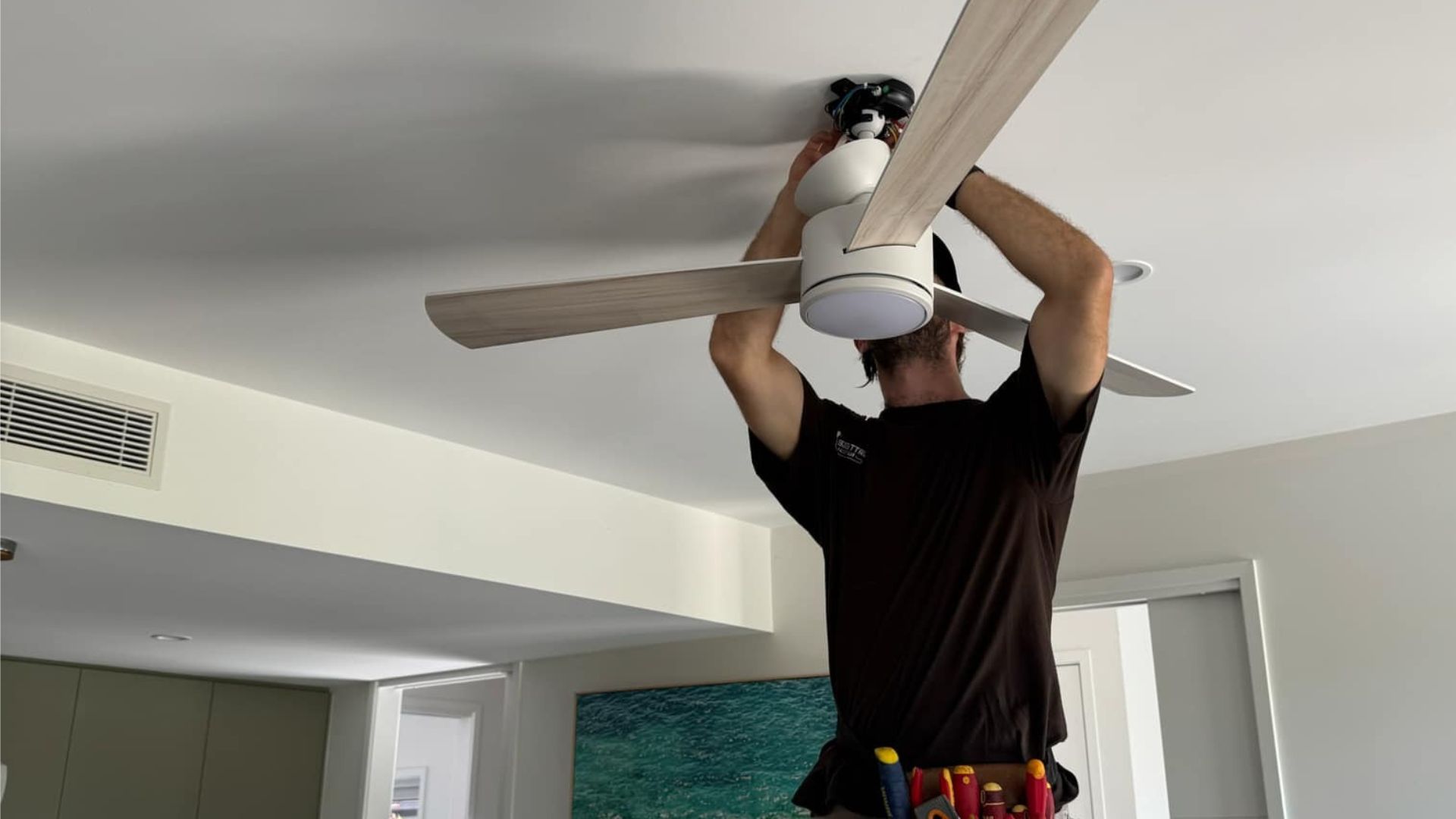
How to Check Your Fan’s Current Setting
Not sure if your fan is spinning the right way? Here’s a quick visual test:
- Turn the fan on to a low speed.
- Stand directly beneath it.
- If the fan blades are moving counterclockwise and you feel a breeze, it’s in summer mode.
- If the blades are moving clockwise and there’s no direct breeze, it’s likely in winter mode.
This simple test can reveal if you need to change direction.
How to Change the Direction
Most ceiling fans come with a direction switch located on the motor housing. You may need a step ladder to reach it safely. Always turn off the power before making any adjustments.
- Standard fans: Simply flick the switch in to reverse direction.
- Remote control fans: Look for a button labelled "reverse" or check your manual for the reverse function.
- Smart fans: Change direction through the app or voice assistant (depending on your system).
Some newer models include a reverse function built into the remote for convenience. If you can’t find a switch, consult the manual for your particular model.
Seasonal Recommendations
Summer Months
Use the counterclockwise ceiling fan setting. This helps create a cooling breeze that can make the room feel up to 4 degrees cooler. You’ll be able to run the air conditioner less often and still be comfortable.
Winter Months
Set the fan to rotate clockwise at a low speed. This helps circulate warm air from the ceiling down to where you need it, creating a comfortable and warm environment without resorting to power-hungry heating solutions.
Common Mistakes to Avoid
- Not switching direction at the start of each season.
- Running the fan too fast in winter mode can create a draft.
- Getting confused between clockwise and counterclockwise directions.
- Assuming your fan operates the same as others. Always check the particular model you own.
Energy Efficiency Tips
- Pair your ceiling fan with your thermostat. In summer, raise the thermostat a few degrees and let the fan do the cooling.
- In winter, reduce your heating bills by circulating heat more effectively.
- Turn off the fan when you leave the room.
- Use low-speed settings in winter and higher speeds in summer for optimal air circulation.
- If you’re running a heater, don’t crank it up to such a high temperature. Let your ceiling fan help spread the warm air.
- Ensure you maintain your fan to keep it functioning correctly
When to Call a Professional
If you encounter any of the following, it might be time to get expert help:
- You can’t find or access the direction switch.
- The reverse function isn’t working.
- You want to upgrade to a remote control or smart fan.
- There are signs of electrical issues.
Watt Edge Electrical, based on the Sunshine Coast, can inspect and adjust your fan or even help with upgrades.
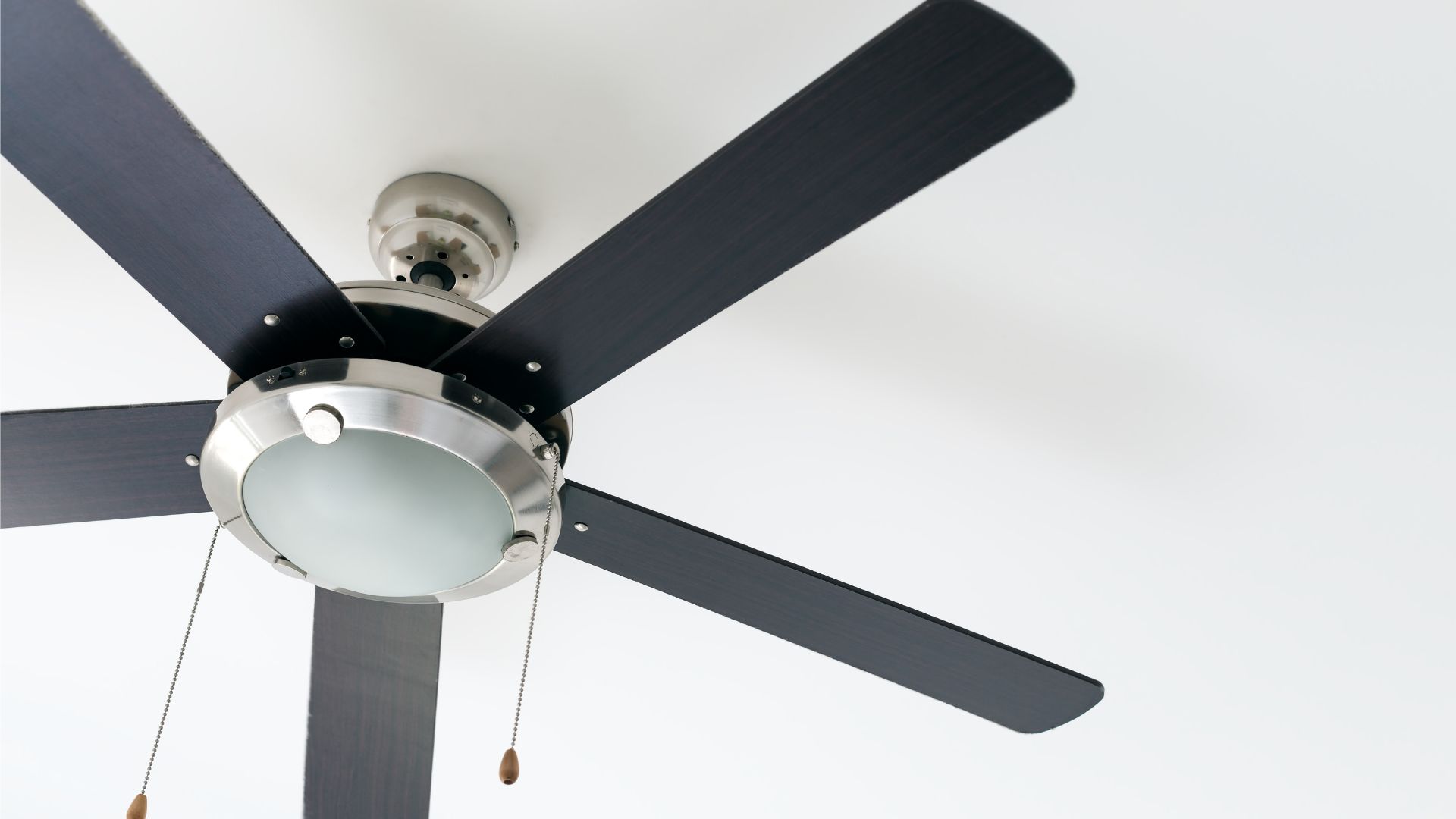
Keep Your Home Comfortable Year Round
Using your ceiling fan correctly is one of the easiest ways to save money, lower your energy costs, and stay comfortable. A simple change in direction can make a big difference in how your room feels and how hard your heater or air conditioner has to work.
So, how to ensure your ceiling fan is set to the right setting? Just check your fan’s rotation, match it to the season, and adjust as needed. Simple, right?
Need help adjusting or upgrading your ceiling fan? Contact Watt Edge Electrical for fast, professional assistance.
Frequently Asked Questions
How do I make sure my fan is turning the right way?
The easiest way is to turn the fan on at a low speed and stand directly underneath it. If you feel a cool breeze, your fan is spinning counterclockwise—ideal for summer. If there’s no breeze and the blades are spinning clockwise, it’s in winter mode. Always double-check the fan direction at the start of each season.
What is the correct setting for a ceiling fan?
The right setting depends on the season:
In summer, your ceiling fan should rotate counterclockwise to push cool air down and create a refreshing wind chill effect.
In winter, switch it clockwise at a low speed to gently recirculate warm air from the ceiling level without causing a draft.
Which way should a fan spin in summer in Australia and in winter?
In summer months, set the fan to spin counterclockwise. This creates a cooling breeze that helps reduce your reliance on air conditioning. In winter months, flip it to clockwise at a low speed. This will help distribute warm air evenly throughout the room, keeping things cosy without needing power-hungry heating solutions.
How do I know if my fan is going the right direction?
Stand directly under your fan and observe the blades. If they’re spinning counterclockwise and you feel a direct breeze, it’s set for summer. If the blades spin clockwise and there’s no breeze but the room feels warmer, it’s in winter mode. Don’t forget to check for a direction switch or reverse function on your fan if you need to change it.


